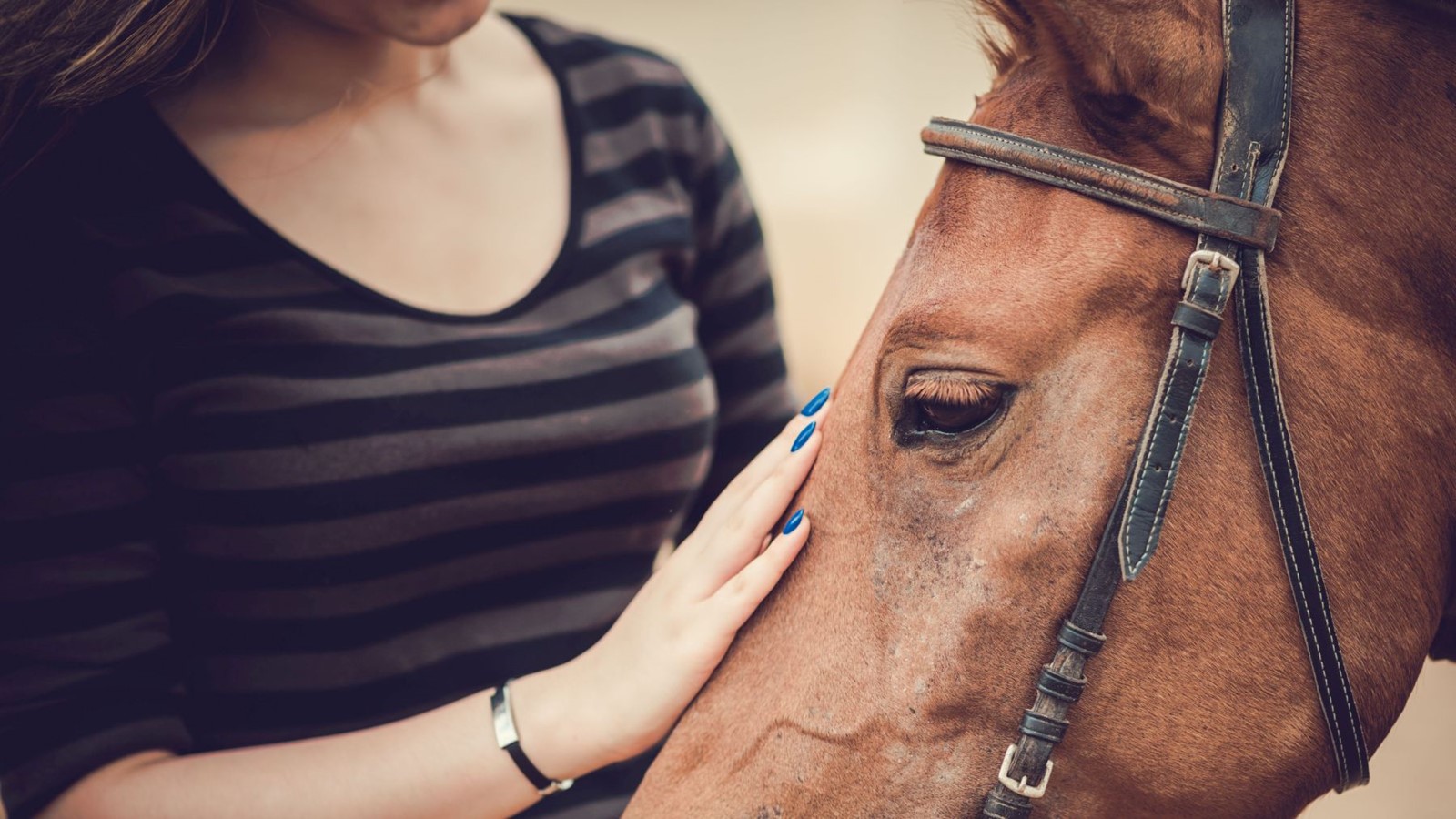Animal-assisted therapy involves interacting with animals as well as a therapist to help you explore your feelings and experiences in a different way.
Including animals can help clients open up and feel more at ease. It can also give therapists useful insights into their clients’ feelings and behaviour, seeing how they form relationships or respond to different situations.
Our member Sarah Urwin says: “Animals are a mood lifter and an ice breaker. They are honest, empathetic and naturally authentic. They don’t judge and they’re not vengeful. They live in the moment."
How does animal-assisted therapy work?
Sarah says animals can provide a bridge through to people with a lot of defence systems and anxieties. “Focusing on an animal can help clients relax, talk honestly and start to explore how they feel about experiences in their lives.”
Tracie Holroyd, who works with horses, says: “Not everybody can engage in therapy in the room, but for many clients, animal-assisted doesn’t seem like therapy.
“Clients may not know what they want from counselling. Being out in the field watching the horses gives them the space and time to feel safe enough to open up and helps them identify what they need. They see aspects of themselves, their relationships, families or work in the horses and how they interact and respond.”
There are also mental health benefits from working outdoors with the animals and therapists. “People can access the calm they need out in the countryside,” adds Tracie. “They can pause and be in the moment.”
What can animal-assisted therapy help with?
Animal-assisted therapy can help with many issues, including anxiety, depression, relationship problems, trauma and eating disorders.
Dogs and cats are often used with people struggling with anxiety or depression.
Sarah says: “Getting up close to the animals - cuddling, touching, stroking - can help clients feel calmer and more connected. It can stimulate the senses and lower blood pressure and heart rate. If someone is depressed, or shutdown, this can be really helpful.”
What happens in animal-assisted therapy?
What happens in a session will depend on you, the issues you’re bringing to therapy and the animal you’re working with.
Different animals can help in different ways. Your therapy might involve cats, dogs, chickens, guinea pigs, horses, pigs – or even fish or birds.
Sessions might include stroking, touching, watching, grooming, washing or feeding the animal. You may walk with dogs, collect eggs from hens or cuddle a guinea pig. Your therapist acts as a facilitator to help you explore and understand the feelings coming out of your interaction with the animals.
“We might try different animals and see what the client responds to,” says Sarah. “We get a feel for what’s going to work.”
Tracie adds: “We focus on the client’s story and allow the time and space for that to unfold. So while we may structure the session on the client’s presenting issues, as the sessions are experiential we never really know what will transpire until it happens.
“Sometimes people need to gain a different perspective and so their session may be about observing the horses. Clients with relationships issues may explore how the horses relate to them. These experiences with the horses give them a greater insight into the issues they’re facing.”
How clients interact with the animals gives therapists a sense of how they form relationships and attachments. Much of the work is with metaphors – discussing how clients are responding to the animals in terms of something else in their lives.
Sarah says: “We get a window into a client's life - how they get along with others, what goes wrong for them and what issues they have. We can help them understand these issues and make changes."
How does animal-assisted therapy affect the animal?
It’s important that therapists consider the animal’s safety and happiness as well as the client’s. Says Sarah: “If the animal is not having a good time in a session, it’s not professional or ethical. And what message does that send to a client.”
Therapists should have measures in place to ensure the animals’ welfare, such as only selecting suitable animals, in some cases giving them training, and ensuring they have opportunities to unwind and play after sessions.
“It’s important the animals can be themselves,” says Sarah, “Their personalities and authenticity is crucial and what clients respond to.”
Tracie says the horses she works with are not specifically trained. Instead, it’s about ensuring the animal is suitable and well behaved.
What to look for when choosing an animal-assisted therapist
Your therapist should be qualified, experienced and a member of a professional body, such as BACP, which demonstrates they’re committed to working to high professional and ethical standards.
Although there are no set standards covering all animal-assisted therapy, some therapists will belong to organisations that have specific ethical or training requirements. For example, Sarah has signed up to Social Farms and Gardens’ code of practice, which has robust requirements of its members. She’s also on a new register for equine assisted therapy practitioners called The Human-Equine Interaction Register (HEIR), which is run by Horses in Therapy and Education International (HETI). Tracie is advanced certified through the Equine Assisted Growth and Learning Association (EAGALA) and abides by their code of ethics and standards.
You can ask your therapist what specific animal-assisted therapy qualifications they have and about their previous experience.
More about animal-assisted therapy
Find out more...

What is counselling?
Find out how counselling works, what therapists do and what happens in a therapy session.

What therapy can help with
An A-Z list of issues and concerns which may be helped by talking to a counsellor.

Therapist Directory
How to use our online therapist directory to search for a counsellor or psychotherapist by location, services or specialisms
